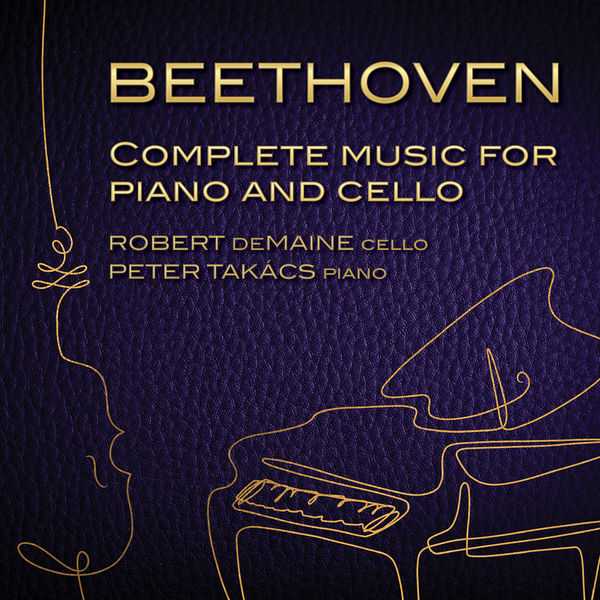
Composer: Ludwig van Beethoven
Performer: Robert DeMaine, Peter Takács
Number of Discs: 2
Format: FLAC (tracks)
Label: Leaf Music
Catalogue: LM233
Release: 2022
Size: 2.43 GB
Recovery: +3%
Scan: cover
CD 01
Cello Sonata No. 1 in F Major, Op. 5 No. 1
01. I. Adagio sostenuto – Allegro
02. II. Rondo. Allegro vivace
Cello Sonata No. 2 in G Minor, Op. 5 No. 2
03. I. Adagio sostenuto e espressivo – Allegro molto più tosto presto
04. II. Rondo. Allegro
Cello Sonata No. 3 in A major, Op. 69
05. I. Allegro, ma non tanto
06. II. Scherzo. Allegro molto
07. III. Adagio cantabile – Allegro vivace
CD 02
Cello Sonata No. 4 in C Major, Op. 102 No. 1 “Free”
01. I. Andante – Allegro vivace
02. II. Adagio – Allegro vivace
Cello Sonata No. 5 in D Major, Op. 102 No. 2
03. I. Allegro con brio
04. II. Adagio con molto sentimento d’affetto
05. III. Allegro
06. 12 Variations on a Theme from Handel’s “Judas Maccabaeus”, WoO 45
07. 12 Variations on “Ein Mädchen oder Weibchen”, Op. 66 (After Mozart’s “Die Zauberflöte”)
08. 7 Variations on “Bei Männern welche Liebe fühlen”, WoO 46 (After Mozart’s “Die Zauberflöte”)
Pianist Peter Takács is best known as an educator, active for many years on the faculty of the Oberlin Conservatory in Ohio. He has recorded sparingly, but connoisseurs know to keep an eye peeled for his releases, some of them with cellist Robert deMaine. This set of Beethoven’s complete music for cello and piano on the small Leaf Records label, including not only the five sonatas but also three rarely recorded variation sets, makes a fine capstone to the careers of both players. There is nothing groundbreaking about their renditions of these pieces, but they are exceptionally penetrating, catching the exploratory quality of the music. Beethoven more or less invented the cello sonata with two equal players (the two early Op. 5 sonatas are not quite there yet, but come closer than anyone else had up to that point), and these works were on the forward edge of the composer’s creativity. This is especially true of the pair of sonatas of Op. 102, in which many details of Beethoven’s vaunted late style were worked out. The coordination between the two performers here is so close that they seem to be exploring the music together, except that, of course, everything is well considered to a remarkable degree. This is chamber music at its absolute best, with its abstract goal of a conversation between players here applied in a profound concrete way.